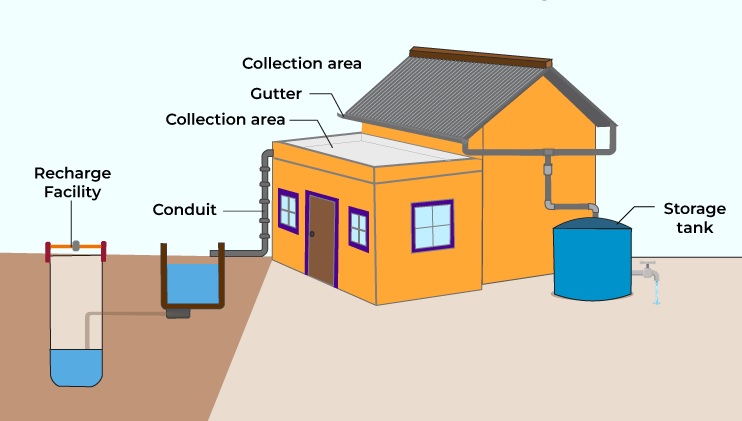
India, with its rapidly growing population and expanding urban centers, is grappling with severe water shortages, particularly in its cities. Overpopulation, inadequate infrastructure, and climate change have exacerbated the situation, leading to water scarcity, especially during dry months. However, one promising solution to mitigate urban water shortages is rainwater harvesting, an age-old method that can play a significant role in addressing this crisis. This technique involves capturing rainwater from rooftops, paved areas, or other surfaces and channeling it into storage systems such as tanks, ponds, or groundwater recharge systems. This water can then be used for various non-potable purposes, such as irrigation, sanitation, and cleaning, and even for potable uses after proper treatment.
Urban Water Shortages in India
India’s urban centers face water shortages due to several factors. One of the key reasons is the increasing demand for water as cities expand, with more people needing access to reliable water supplies for drinking, cooking, bathing, and industrial purposes. Moreover, cities often rely heavily on external sources such as rivers or distant reservoirs, which are not always sustainable in the long run. In addition, poorly managed water resources, leakage in pipes, and over-extraction from aquifers further aggravate the situation.
Furthermore, erratic rainfall patterns and rapid urbanization, which lead to the loss of natural water absorption areas like wetlands and forests, contribute to the problem. With most of the rainwater flowing off impervious urban surfaces like roads and rooftops instead of seeping into the ground, cities are left vulnerable to water scarcity.
Rainwater Harvesting as a Solution
Rainwater harvesting can significantly alleviate water shortages in urban areas by reducing dependency on distant water sources and promoting local water management. It has numerous advantages, starting with its ability to augment water supply. By collecting rainwater during the monsoon season, cities can store this valuable resource for use during drier periods, thus ensuring a steady and reliable supply of water.
Additionally, rainwater harvesting helps recharge groundwater levels, which have been depleting rapidly due to excessive extraction. When rainwater is captured and directed into the ground, it helps restore the water table, improving the availability of groundwater for wells and boreholes. This is particularly crucial in urban areas, where groundwater serves as a primary source of drinking and irrigation water.
Furthermore, rainwater harvesting systems can reduce the strain on municipal water treatment facilities by decreasing the demand for treated water. This system also mitigates flooding by controlling the flow of rainwater, which would otherwise overwhelm stormwater drains.
Challenges and Implementation
While the benefits of rainwater harvesting are clear, its widespread adoption faces several challenges. Many urban residents and municipal authorities remain unaware of the potential of this method. In some cases, the lack of infrastructure and financial resources makes it difficult to implement large-scale rainwater harvesting systems.
To overcome these barriers, India’s government has initiated policies to promote rainwater harvesting. Various states and cities have introduced mandatory guidelines for the installation of rainwater harvesting systems in both residential and commercial buildings. Incentives such as subsidies and tax benefits can further encourage adoption.
Conclusion
Rainwater harvesting represents a sustainable and effective solution to India’s urban water shortages. With its ability to reduce dependence on external water sources, recharge groundwater, and improve water management, it is a critical strategy for addressing the growing challenges of water scarcity. By raising awareness and implementing effective policies, rainwater harvesting can become an integral part of India’s approach to sustainable urban water management.


